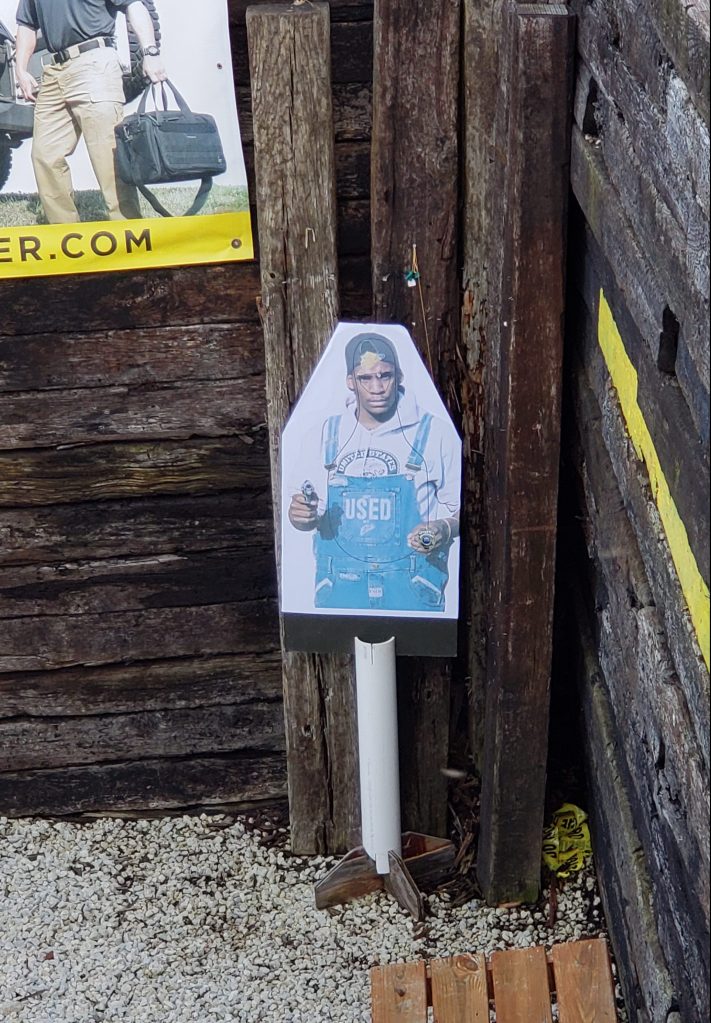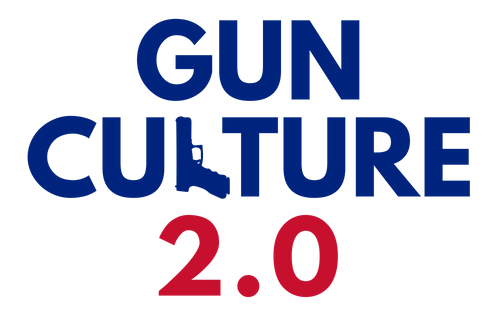Shooting a gun is relatively easy. The number of toddlers who have shot and killed themselves and others is ample evidence of that.
Shooting a gun with enough accuracy for most self-defense situations is also simpler than it might seem. Ask those who took basic gun training courses with Tom Givens and successfully defended their lives with a gun.
Shooting a gun at an appropriate time, place, and person, by contrast, is more complex, and the consequences of making a bad decision could not be higher.
This reality was brought home to me in a profound way at the Alliance Police Training shoothouse course I attended recently. Indeed, calling this a “shoothouse course” is a bit of a misnomer. The class really ought to be called “Decision-Making with a Gun.”

Before people jump to all sorts of conclusions based just on some pictures, let me be clear: I fully realize the odds of me getting together with a partner and entering a structure from the outside armed with rifles is vanishingly low.
Photos of me and my partner in the shoothouse at Alliance are – on their own – extremely misleading. Although we did learn procedures for working through structures with rifles and partners, that was not the main lesson I learned from my experience.
The main lesson I learned was how much I need to work on making good decisions while armed, especially under stress created by the novelty and complexity of our task, as well as time constraints and visual limitations (we did several low light runs in the shoothouse).

Thinking and shooting under those conditions are much more difficult than on a square range. Which is not to say that gun trainers should not attempt to incorporate decision making into their square range courses; I have personally seen this in courses by Gabe White and Rob Pincus, and surely many others do this as well. But the shoothouse allows trainers like Joe Weyer and Cory Hupp to take this to the next level and evaluate the progress made (or not made) on the square range.
At the end of the weekend, I led or was tied for the lead in 3 of the 8 negative categories being tracked: shot hostage/innocent targets, failure to engage threat targets, and safety violations.
Although I excelled in these areas, I was not alone. In the final run through the shoothouse on Sunday afternoon, each member of all 6 groups (12 people total) shot both of the first two targets we encountered – a woman holding a beer bottle and an undercover police officer.
The undercover police officer target was instructive because it highlights how our heuristics – explicit or implicit – can bias our decision making. We can’t allow ourselves to go on auto-pilot when innocent people’s lives are at stake.
Although clearing a structure with a rifle and a partner in search of a hostage in a terrorist bomb making facility is an unlikely scenario for me, I was easily able to substitute my own more realistic (even if also unlikely) scenarios as I reflected on my runs through the shoothouse. For example, I come home from a trip and find the door of my house kicked in and my wife inside, or I am awoken in the middle of the night by a cry of distress coming from my child’s room. Do I sit outside or barricade myself in my room and wait for the police to arrive? No.
At the same time, just because someone is in my house doesn’t mean “they need shootin’” or, as Joe Weyer says, “they need shot.” The Tactical Professor Claude Werner has discussed the many times when an innocent person has ended up at a person’s doorstep or in their house only to become a negative outcome for the homeowner. And an even more negative outcome for the person shot (which seems often to be a family member of the shooter).
In the end, it’s not about the shoothouse, it’s about decision making with a gun.


Prevailing thought is that all skills degrade if not consistently practiced, often to the point of incompetence. Recency is another favorite term referring to when you last practiced your firearms skill and has direct relationship to whether you will succeed or fail. As David aptly points out, it is not the shoot house tactics that are ultimately valuable to the everyday CCW carrier, but the ability to make good decisions in the stress of a violent encounter, most often not of our choosing.
That being said, why don’t we spend more time learning to make good decisions and then apply those decisions to the more tactical side of training? If recency and skill degradation are valid, we should spend as much time developing good brain maps of shoot/no shoot as we do dry firing training. In fact, both should go together. While visualization is a valuable technique, those visualized scenarios should be augmented with more hands-on scenarios. A number of commercial video simulation training programs are available and are mostly geared to law enforcement with few new ones coming online commercially for the consuming public. Unfortunately there is not much available for the average trainee at an affordable price point.
Unless you have access to one of these training venues (and the time and financial wherewithal), a simple solution is to make your own power point program incorporating a variety of shoot and no shoot scenes or targets readily found online. Run your pictures randomly with varying time intervals and engage (or not) with a laser training pistol as part of a dry fire routine. Another suggestion is to check out “Perception, Cognition, and Decision Training,” by Joan Vickers. The section on decision training has a wealth of materials that should help anyone who wants to learn to make better decisions. Train accordingly….
LikeLiked by 1 person
People generally don’t dry-practice drawing to a low ready or drawing and *not* shooting nearly often enough.
LikeLiked by 2 people
“THREAT!” Oh, wait, I stand corrected. Sorry I shot you.
LikeLiked by 2 people
https://www.armedresponsetraining.com/product-p/arvts005.htm is a link to a video of shoot/no shoot situations I found useful.
LikeLiked by 1 person
Thanks for the link. Yes, the Armed Response video provides some good scenarios with commentary. Not bad for $20 but is a one time view for training purposes. Additional viewing is a refresher and would reinforce initial responses.
LikeLiked by 1 person
Another story of a bad shoot, this time by a Midlothian, IL police officer. That picture reminded me of this.
https://www.cnn.com/2018/11/13/us/security-officer-police-shooting-suburban-chicago/index.html
LikeLiked by 1 person
Sad resemblance in the cases. I thought about that.
LikeLiked by 2 people
Well said David.
LikeLiked by 1 person
Thanks, coach.
LikeLiked by 1 person
[…] David Yamane always seems to have some insight. Recent events indicate that cops could use some of the insight. It’s Not About the Shoothouse, It’s About Decision-Making with a Gun/ […]
LikeLike
[…] emphasized repeatedly that the average police officer on the streets is scarcely better trained at “decision making with a gun” than the average armed citizen (who is quite poorly […]
LikeLike
[…] I’ve also made bad decisions on a training course. https://gunculture2point0.wordpress.com/2018/11/12/its-not-about-the-shoothouse-its-about-decision-m… […]
LikeLike
[…] team tactics and building search classes when they don’t do those things for a living? Part two of the series provides even more detail about the advantages of shoot house training. Part Three talks about […]
LikeLike
[…] taught the 3-day shoothouse – or, rather, decision-making with a gun – course I attended recently at Alliance Police Training (APT) where he has been Director of […]
LikeLike
[…] to attending the shoothouse course at Alliance Police Training organized by Paul Carlson of Safety Solutions Academy and taught by Joe Weyer and Cory Hupp, such a […]
LikeLike
[…] this decision making and response.” Experiential learning is necessary, as I learned in the “decision making with a gun” course I took recently at Alliance Police […]
LikeLike
[…] and Joe Weyer), I would suggest reading Professor David Yamane’s series of articles here, here, here, and here. There aren’t too many sociologists taking shoothouse classes (not to mention […]
LikeLike
[…] would have led me to the conclusion that it was a “shoot” target, something that happened in the shoothouse course I have written about previously (all 12 of us shot “no shoot” targets – a woman holding a beer bottle and an undercover […]
LikeLike
[…] It’s Not About the Shoothouse, It’s About Decision-Making with a Gun […]
LikeLike
Why do you think that guy with the fake internet badge was pointing a gun at you? Did you get a good look at that badge? Photo targets with a badge and a gun pointed at you don’t provide time to assess and establish legitimacy. Google “Buy a Police Badge”. Fake badges are easy to get and sometimes found on bad guys. If you want to put an “off duty cop” in a scenario, I recommend having them cover a suspect with their gun oriented 90 degrees from the shooter. This is much more reasonable for assessment. You can move to cover and challenge or even offer to help if you feel good about the badge.
LikeLike
Interesting points. I don’t know whether the folks at Alliance Police Training have considered the modification you suggest. For me as a basic end user, the scenario highlighted the difficulty of making these assessments even in a shoothouse. The possibility you mention only reinforces that!
LikeLike
[…] end, Apache Solutions’ concealed carry course makes use of various videos to introduce the complexity of the decision-making that goes along with being an armed citizen. These include John Correia’s Active Self […]
LikeLike
[…] Police Training. The course title is a bit misleading, as I have noted. It ought to be called “Decision-Making with a Gun.” In Weyer’s estimation, the firearms part of the gunfight is only 10% of the equation; 90% is […]
LikeLike
[…] John Murphy’s Concealed Carry: Advanced Skills and Tactics course, Alliance Police Training’s Carbine Shoothouse course, Craig Douglas’s Extreme Close Quarters Concepts course, and The Complete Combatant’s Force […]
LikeLike